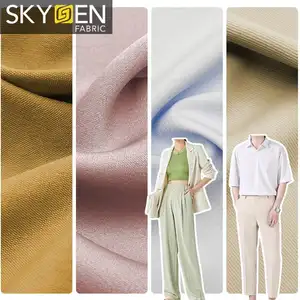Exploring Abaya Fabric Varieties
The world of abaya fabric encompasses a diverse range of materials, each offering distinct textures and properties to meet the varied demands of the fashion industry. This category is not just about the traditional black cloak; it extends to a variety of fabrics used to create elegant and modest attire. From the fluid drape of chiffon abaya to the luxurious sheen of abayas satin, the selection caters to an array of design preferences.
The Significance of Material Choice
Selecting the right abaya material is crucial, as it defines the comfort, look, and durability of the garment. Nida fabric, known for its softness and breathability, is a popular choice for abayas, offering a graceful fall and sufficient coverage. For those seeking eco-conscious options, materials like abaya linen stand out for their natural fibers and sustainability. The versatility of the fabric selection allows for various applications, from daily wear to special occasions.
Functional Attributes of Abaya Fabrics
Beyond aesthetics, the functional attributes of abaya cloth material are paramount. Durability and ease of maintenance are key considerations, with synthetic options like polyester being favored for their resilience and moisture-resistant qualities. For a more tactile experience, fabrics such as crepe abaya and corduroy abaya offer unique textures that cater to individual tastes while maintaining the abaya's modest silhouette.
Environmental Considerations and Innovations
Innovation in the textile industry has led to the development of eco-friendly fabrics, such as recycled polyester, which aligns with the growing demand for sustainable fashion. The introduction of abaya crepe made from recycled materials reflects a commitment to environmental stewardship without compromising on style or quality. Additionally, advancements in fabric technology have enhanced the functionality of abaya materials, making them suitable for varying climates and lifestyles.
Design and Decorative Elements
The design potential with abaya fabrics is vast, with options like organza abaya adding a touch of elegance through its sheer, lightweight nature. For those desiring a more textured look, crinkled abaya fabric provides an effortless, contemporary style. The fabric's adaptability allows for a range of decorative elements, from intricate embroidery to simple, clean lines that honor the abaya's traditional roots.
Conclusion
The array of abaya fabric material available caters to a spectrum of preferences, ensuring that every abaya not only adheres to cultural norms but also resonates with personal style. The industry continues to evolve, introducing innovative materials like nida fabric abaya and jersey abayas, which offer comfort and versatility. As the market for abaya fabrics grows, the focus remains on providing materials that are both functional and fashionable, meeting the needs of a diverse clientele.









































 浙公网安备 33010002000092号
浙公网安备 33010002000092号 浙B2-20120091-4
浙B2-20120091-4